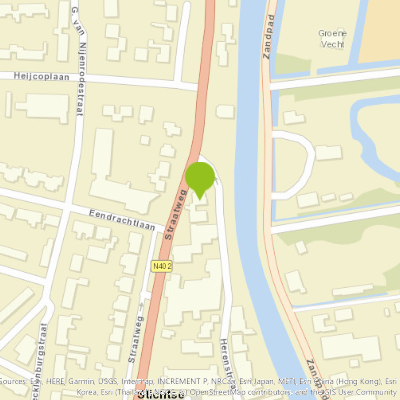odp
169 to 192 of 298 locations
-
Fort Tienhoven
Fort Tienhoven
3612 NB Tienhoven
-
Fort Abcoude
Fort Abcoude
1391 CG Abcoude
-
Brasserie Soesterduinen
Brasserie Soesterduinen
3768 MD Soest
-
Slot Zeist
Slot Zeist
3703 CE Zeist
-
VVV Scherpenzeel
VVV Scherpenzeel
Vlieterweg 17
3925 GA Scherpenzeel
-
De Vriendschap windmill
De Vriendschap windmill
Nieuweweg 109
3905 LJ Veenendaal
-
Dutch Fortress Museum
Dutch Fortress Museum
Westwalstraat 6
1411 PB Naarden
-
City castle Oudaen
City castle Oudaen
A monumental building from 1276 with its own brewery and a number of conference rooms, among other things.
In or around the year 1276, the Zoudenbalch family commissioned the construction of this so-called city castle. The building was entirely made of bricks, turning it into some kind of defence house. In 1395, the building got into the hands of the Oudaen family who named it after themselves. From 1758 until 1965 it was used as an old folks' home. After that, it was briefly in the possession of a student association. Since 1986, Oudaen is being used as a catering establishment.

3511 AE Utrecht
-
-
Fort Ruigenhoek
Fort Ruigenhoek
Ruigenhoeksedijk 125A
3737 MR Groenekan
-
TOP Ameide
TOP Ameide
4233CL Ameide
-
Castle Groeneveld
Castle Groeneveld
3744 ML Baarn
-
Goejanverwelle lock
Goejanverwelle lock
The Goejanverwelle lock and the Enkele Wiericke lock on the Hollandse Ijssel played a key role in the Disaster Year. Together with the lock at Nieuwerbrug on the Oude Rijn, they formed the inlet to the Langeweide polder, which was the narrowest section of the Waterline. The locks were opened on 17 June 1672 – just in time to halt the advance of the French, who had already captured Oudewater and marched right up to the edge of the hastily flooded Waterline. With great promptitude, the commander of the garrison at Goejanverwelle, the Count of Horn, gave the order to raise sconces and fortifications to defend the locks. For the moment, the Waterline was safe!

3467 PR Hekendorp
-
-
Molen de Windhond
Molen de Windhond
3447 GR Woerden
-
TOP Fort at the Buursteeg
TOP Fort at the Buursteeg
3927EJ Renswoude
-
De Kastanjeboom
De Kastanjeboom
3751 LC Bunschoten
-
TOP Nationaal Tree museum Gimborn
TOP Nationaal Tree museum Gimborn
3941 BZ Doorn
-
Tourist Information Point Leerdam
Tourist Information Point Leerdam
Leerdam, who has not heard about this beautiful city? Since 1765 the Glasscapital of the Netherlands and the whole world eats our Leerdammer Cheese. If you're looking for culture, good food, sailing, shopping, walking or cycling? The city center of Leerdam has it all!
Are you looking for information about Leerdam, tips and ideas, bicycle or walking routes? Come visit us in the Tourist Information Office in Leerdam. We are happy to help you find your way around Leerdam.

4141 AV Leerdam
-
-
Winkel van Sinkel
Winkel van Sinkel
Oudegracht 158
3511 AZ Utrecht
-
Bungalowpark 't Eekhoornnest
Bungalowpark 't Eekhoornnest
3768 HL Soest
-
De Wildenburg pancake farm
De Wildenburg pancake farm
3744 MK Baarn
-
Bicycle Boat, stop Breukelen
Bicycle Boat, stop Breukelen
Herenstraat 41
3621AP Breukelen
-
Recreatieboerderij De Kleine Weide
Recreatieboerderij De Kleine Weide
3927 CV Renswoude
-
Soesterduinen
Soesterduinen
Foekenlaan 25
3768 BJ Soest
-
Fort Vreeswijk
Fort Vreeswijk
3433 ZZ Nieuwegein






